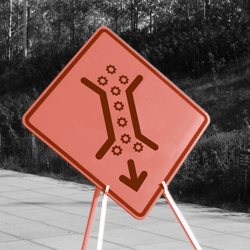Time to Start Clearing Bottlenecks in Cell and Gene Therapies
By Sanjay Srivastava, Ph.D., Managing Director, Cell & Gene Therapy CoE Lead at Accenture; Jason Ramseth, Pharmaceutical Customer Experience, IT & Commercialization Advisor and Consultant; and Aaron Vernon, VP of Technical Operations at TCR2 Therapeutics Inc.

The accelerated development in gene therapies has fundamentally shifted away from the traditional biopharmaceutical business model. With the increasing pace of new cell and gene therapies (CGT) receiving approvals and in development, the current capacity of the CGT ecosystem is unable to keep up with the clinical and commercial products coming to market.
Many clinical practices lack the adequate capabilities to manage CGT trials, in areas such as cell handling. Because this research requires in-patient treatment for very ill populations using complex processes, institutions will need to invest in a number of resources to deliver the right capabilities. Additionally, delivering specialized CGT treatment typically requires a high-touch customer service model for hospitals and clinics.
The current legacy model, however, offers clinical trial sponsors limited engagement with site and sponsors, typically interfacing with no more than a few site personnel. Both trial sponsors and clinical sites lack mature capabilities to support CGT clinical trials, leading to significant gaps and bottlenecks that are impacting the performance of clinical trials.
A New Dichotomy
Historically, traditional biopharma companies have engaged with treatment centers such as hospitals/clinicals as their customers, while only having to negotiate payments, reimbursements, and purchase orders. However, a new challenge has risen for CGT manufacturers, which is continuing to engage with hospitals/clinics as customers, but now also as suppliers. Treatment centers provide the initial patient material to initiate the autologous CGT; they are suppliers of collected starting material, who need processes and principles to be developed across the supply chain.
Autologous CGTs require a process of extracting either immune or stem cells, with specialized handling requirements such as cryopreservation. The process requires just-in-time orchestration of the supply chain and must follow the FDA’s Good Manufacturing Practices, which can be problematic for many centers. Additionally, these centers are required to manage apheresed cell processing, packaging and shipment while following manufacturer-specific processes. The cell labs are typically constrained for storage space and staff, and find it challenging to follow non-standard procedures specific to clinical sponsors. Another added complication for apheresis centers is that they have their own health information technology infrastructure, which is often not interoperable or connected with treatment centers. The lack of infrastructure and data interoperability limits optimization of unit capacity in highly manual activities across patient scheduling and treatment processes.
To manage this complexity, clinical trial sponsors have set up apheresis services, cell logistics, and patient support services operations functions to help shepherd patients through the scheduling, cell collection and treatment process, currently a challenge for most treatment centers. CGT companies begin discussions with treatment centers as suppliers, which includes a new set of relationships and negotiate service agreements that span across the entire cell collection value chain. The responsibilities of patient scheduling, cell logistics and patient operations functions is defined based on how close the company is to commercial launch and how large the commercial patient volume is. There are also regulatory nuances based on where the product is manufactured vs. where it is administered – a vertically integrated treatment center.
Each manufacturer has stood up proprietary apheresis and cell logistics support services model, leading to increased complexity at the treatment centers. When clinical trials ramp up near the peak of patient enrollment targets and anticipated commercial launches commence in the near future, apheresis capacity will become a critical bottleneck in the autologous CGT treatment pathway. Many centers and cell labs cannot scale efficiently to manage multiple clinical trials and high patient volume.
Standardization, Please
Manual coordination of operations that span across patient scheduling, apheresis procedure, cell processing, and treatment, and multiple touchpoints across clinical, hospitals, apheresis centers, manufacturers, and delivery companies is a logistical nightmare. The high dependency on manpower to provide high-touch support services to facilitate the process coordination, leaves room for human error and limits scalability of apheresis operations to accommodate more patients and centers. For CGT ecosystems to keep pace with the rising demand of new therapies in the pipeline and more coming to market, it will require apheresis operations to become standardized to allow for simplification and potential automation of high-volume and low value add tasks. A level of standardization must be defined for operations but also incorporating a different approach to providing support services based on product modalities. To simplify current operations and to establish trusted relationships between CGT companies, hospitals, and manufacturers will need a cross-healthcare sector approach with investment to define people, process, and technology to sustainably support operations.
- Set up an industry working group and work across CGT manufacturers and standards body(s) to identify a common definition of a support services model that is based on a lowest common denominator. The model definition should be driven with an intent to streamline and standardize processes across the apheresis value chain that help reduce new SOPs that need to be adopted by treatment centers.
- Promote the use of digital systems with a goal of simplifying the end-to-end process without standing up additional portals/systems that tend to complicate the providers administrative activities.
Currently, CGT companies are still deciding between a build, buy, and partner strategy to design and implement an apheresis support services organization. Some of the challenges that are posed with leveraging different and proprietary operating models is that it makes it difficult for hospitals and clinics to adapt to each CGT manufacturer’s specific processes and enabling technologies. Additionally, with the lack of integration across systems, it becomes cumbersome for physicians and site staff to manage multiple platforms. To enable standardization across the CGT value chain, the industry must come together to share lessons learned and experiences and align on an approach for standardization to deliver quality experiences to their customers. Once operations are standardized across the apheresis operations, it will allow for CGT companies to invest in capabilities and leverage expert suppliers for commoditized tasks who can help to scale operations.
Removing the Constraint
Another key bottleneck that limits scale for the CGT value chain is the physical infrastructure limitations. Within the United States there are about 200 - 250 apheresis centers which are within FACT accredited institutions to support the clinical trials along with commercial products. Most apheresis centers have only five to six chairs at the biggest hospital centers, where 60% of availability is slotted for stem cell extractions and 40% for clinical trials. Additionally, for clinical trials, autologous CGT clinical trial sponsors must compete for available capacity. Due to complex processes, apheresis centers often allocate more days for stem cell apheresis, and leukapheresis procedures compete with stem cell and other apheresis procedures, creating a capacity squeeze on CGT clinical trial sponsors, physicians and patients. For CGT sponsors this is a major barrier to apheresis site selection and onboarding which impacts study target timelines. When clinical trials ramp up near the peak of patient enrollment targets and anticipated commercial launches commence, apheresis capacity will become a critical bottleneck in the autologous CGT treatment pathway. Many centers and cell labs cannot scale efficiently to manage multiple clinical trials and high patient volume.
A worsening apheresis bottleneck requires simplicity in operations to achieve efficiencies and address constraints. As noted above, standardization of roles, apheresis support service processes and systems will improve operational efficiencies. While standardizing support services provided by CGT sponsors will reduce redundancies in the system and alleviate the burden on the treatment sites, it will still require CGT sponsors to deploy resources to provide services that are non-core to the mission of CGT sponsors, who are focused on innovation and delivering potentially curative therapies to patients.
When the industry accomplishes standardization in providing support services to the apheresis centers, the system will be ripe for third-party apheresis and cell logistics support service providers who will provide support services on behalf of the CGT sponsors. Such a scenario would help the system keep pace with the clinical and commercial demands of CGT. However, many CGT sponsors have a wait-and-see approach for outsourcing any of the apheresis services, cell logistics and/or patient operations functions. They are not yet willing to outsource the services they provide to the centers. They believe these functions are a critical part of the customer and patient experience. When faced with inconsistent deployment of CGT sponsored processes and onerous need to provide apheresis support services along with cell logistics, and patient operations, industry leaders agree that organizations will be willing to outsource when:
- The vendor market is mature enough to offer services at high standards, consistently
- For geographies where the company’s reach is low or commercial volume is low
The current vendor landscape is immature and evolving. To serve the Apheresis staff in a high touch model, extend beyond the current capability set of Hub service providers. Supporting the industry will require either new entrants or expanded services by the current service providers. We have just started to see that new market entrants are stepping in to support CGT companies on how to manage their apheresis operations. Recently, Orchard Therapeutics has announced a partnership with Be The Match BioTherapies to support their European commercial operations which include onboarding and supporting of apheresis centers and management of supply chain logistics.1 Another non-traditional partner supporting operations is Red Cross, which conducts more than 10,000 therapeutic apheresis operations every year in the US.2 We are also seeing nonprofits such as Blood Centers of America and Key Biologics addressing apheresis capacity issues.
Conclusion
In our view, the lack of process standardization and scale to support current and projected development activity will drive transformation of the industry on two levels. The first is the decentralization of the operating model. The second is the emergence of new business entities that will drive standardization and enable and sustain the decentralized operating model.
The incumbents can play a critical role in this evolving marketplace. They can facilitate the transformation by collaborating cross-functionally and cross-industry for re-imagining the processes and ways of working to develop a standard approach for how multiple functions and groups can work collaboratively to define a consistent approach to providing support services for apheresis operations. However, for this to be successful, it will require a shift in perspective for CGT stakeholders to be more trusting and collaborative with new ways of working and new market entrants.
Sources:
- https://bethematchbiotherapies.com/newsroom/be-the-match-biotherapies-announces-expansion-of-multi-year-strategic-alliance-with-orchard-therapeutics-to-support-european-commercial-launch-of-libmeldy/
- https://www.redcrossblood.org/biomedical-services/specialty-services/therapeutic-apheresis.html
 Sanjay Srivastava, Ph.D., is a Managing Director in Accenture’s Life Sciences Strategy & Consulting practice, leading Cell & Gene Therapy CoE and practice. Sanjay has broad and deep expertise in the underpinning science and business challenges in developing and launching both in-vivo and ex-vivo C>s. He has global expertise in R&D, supply chain, manufacturing, and commercial operations. He is active in the industry, driving harmonization and simplicity in C> practices and has presented his insights at various CGT conferences.
Sanjay Srivastava, Ph.D., is a Managing Director in Accenture’s Life Sciences Strategy & Consulting practice, leading Cell & Gene Therapy CoE and practice. Sanjay has broad and deep expertise in the underpinning science and business challenges in developing and launching both in-vivo and ex-vivo C>s. He has global expertise in R&D, supply chain, manufacturing, and commercial operations. He is active in the industry, driving harmonization and simplicity in C> practices and has presented his insights at various CGT conferences.
 Jason Ramseth is a senior customer experience and IT professional who plans, designs and implements the strategies, processes, and systems to help biopharmaceutical, emerging cell, and gene therapy companies bring new therapies to market. He provides consulting and advisory services for several cell and gene therapy companies, as well as key industry partners including software providers / integrators, and channel partners.
Jason Ramseth is a senior customer experience and IT professional who plans, designs and implements the strategies, processes, and systems to help biopharmaceutical, emerging cell, and gene therapy companies bring new therapies to market. He provides consulting and advisory services for several cell and gene therapy companies, as well as key industry partners including software providers / integrators, and channel partners.
Most recently, Jason was Vice President, Customer Experience (2017 – 2020) at Juno Therapeutics, a biopharmaceutical company acquired by Celgene Corporation and eventually Bristol Myers Squibb. Prior to that, Jason advanced rapidly at Amgen Inc. from (2002-2017) through a series of IT leadership and commercial operations roles.
 Aaron Vernon is the VP of Technical Operations at TCR2 Therapeutics Inc. He has 20+ years of experience in manufacturing, supply chain management, organizational transformation, and facility design/constructions at Johnson & Johnson, MedImmune, AstraZeneca, Sucampo, Autolus, and TCR2. He has BS and MS degrees in Mechanical Engineering from the University of Pennsylvania and Rutgers, respectively, and an MBA from the UMGC. He can be reached via LinkedIn (https://www.linkedin.com/in/aaronvernon) or avernon@alumni.upenn.edu.
Aaron Vernon is the VP of Technical Operations at TCR2 Therapeutics Inc. He has 20+ years of experience in manufacturing, supply chain management, organizational transformation, and facility design/constructions at Johnson & Johnson, MedImmune, AstraZeneca, Sucampo, Autolus, and TCR2. He has BS and MS degrees in Mechanical Engineering from the University of Pennsylvania and Rutgers, respectively, and an MBA from the UMGC. He can be reached via LinkedIn (https://www.linkedin.com/in/aaronvernon) or avernon@alumni.upenn.edu.

